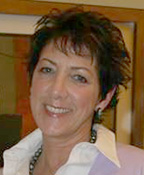 |
|
Harvey Silverman, DMD
|
In this edition of Silverman On Smiles: Cosmetic Dentistry SOS, I want to encourage you to consider the benefits of being a proactive presenter when discussing elective cosmetic dentistry with your patients. When you do, it will directly impact your elective cosmetic dentistry practice with positive results.
Case Study
A patient presents to the office, curious to learn if veneers could improve his smile. The patient recently graduated from college and now has several job interviews. Preparing for his interviews he would like to enhance the appearance of his maxillary left lateral incisor and have a more self-confident smile. His chief concern is that when he smiles, the size and shape of his maxillary left lateral incisor often makes it look like he is missing a tooth. He wants to know what can be done.
The Back Story
This patient had a friend who had a porcelain veneer done by a dentist in another city. What you do not know is that his friend’s porcelain veneer chipped when eating a frozen candy bar. He is silently wondering, “If I have veneers, will my veneers chip too?” Indeed, during your consultation he is looking straight at you, nodding his head as you describe the benefits and liabilities of veneers. You interpret this to be that your patient is on the same page as you. This scenario of your patient nodding in agreement must sound familiar. It probably happens every day.
In the last edition of Silverman On Smiles: Cosmetic Dentistry SOS, I discussed the difference between the reactive presenter and the proactive approach. The reactive presenter asks the patient at the conclusion of the consult if there are any questions. The less assertive patient might say, “I don’t have any.” In contrast, the more assertive patient might use this opportunity to ask about chipping and food limitations. If questions about food limitations are brought up to you, describe that he can enjoy eating food since veneers are strong and durable. You include the caveat that he will need to employ some common sense limitations (such as not biting into thick carrot sticks, hard bagels, frozen candy bars, etc). Sounds like a fairly typical elective cosmetic dentistry consultation that many dentists have had.
The Problem
There is a subtle problem with this approach though. Let’s do a quick rewind and go back to the beginning of the consult. I have learned from years of coaching dentists on how to be more effective doing cosmetic consults that patients’ minds are often cluttered during the consultation with various questions. Thus they do not always actively listen to what you are saying. You may think they are, but quite often they are not. Instead they are thinking about issues such as cost, durability, etc. Sadly enough, only 50% or so of what is being presented may be absorbed or understood. That is one of the reasons why many patients say, “Thank you. Let me think about it.” You have undoubtedly had patients respond like this too. Everyone has.
In contrast, let’s look at a proactive approach. This is where you intentionally include answers to commonly asked questions during the consult. The information you share remains the same except you might try saying the following:
“If you are like many of my other patients you probably have several questions. These include do veneers chip easily, what happens if I need a touch up, will it stain, will it match the color of my adjacent teeth, will it look natural, what can I eat, what will it cost and other similar questions. (Nearly every patient will look relieved and say, “Yes, I was just thinking about that” or “Yes, I was going to ask you about that too.”)
Using the proactive approach you continue on and say, “Well, as you may know in my practice I do a lot of cosmetic dentistry and I have heard these questions asked by many other patients. So let’s go over the answers to these questions and please feel free to let me know if you have any other questions or concerns.”
The key advantage of the proactive approach is that it addresses hidden concerns that patients have while providing patients with knowledge (think increased confidence in you) that you do a lot of cosmetic dentistry.
One final thought about the timing of the proactive approach. When would you include this Q&A in your case presentation? From doing many on-site cosmetic consultations with dentists I have found that it is best to include it after reviewing your patient’s smile analysis form and immediately after performing computer imaging or a chair-side smile preview.
I do have one additional thought for you to take away. Consider this series of articles to be similar to having a navigation system in your car. My goal is to help take you to your destination with maximum joy and minimal stress. I will share with you lessons dentists have learned during my onsite cosmetic dentistry consultations and you will hopefully learn how to avoid obstacles that stand in your way to expand your elective cosmetic dental practice. During the past 25 years and the hundreds of seminars and/or onsite consultations I have given on cosmetic dentistry, I have learned that when you prepare for success you will have a much easier time taking your cosmetic practice to the next level.
I hope you and your team are ready to enjoy the journey as you prepare to take your elective cosmetic dentistry practice to the next level. Remember to think how you might proactively address patient concerns in order to provide your patients with a brighter, more self-confident smile.
Dr. Silverman has been successfully coaching dentists on how to expand their cosmetic dentistry practice since 1984. If you want to take your cosmetic practice to the next level or want more information about the Silverman Institute’s 24 Hour Cosmetic Transformation Program, please contact him at (216) 256-4599 or e-mail him at incrediblesmiles@aol.com.









